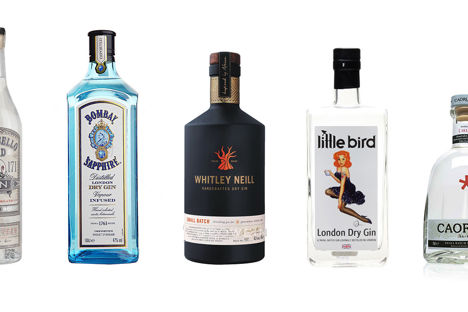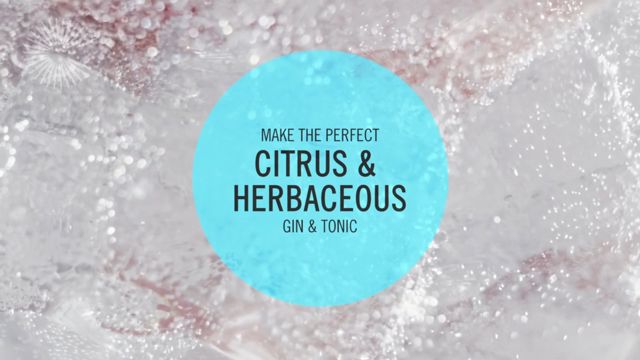
Britain's best citrusy and herbaceous gins
With a focus on light citrus and interesting herby flavours, these five gins are perfect for those who prefer something less heavy, more refreshing and completely delicious.
Britain's best citrusy and herbaceous gins
With a focus on light citrus and interesting herby flavours, these five gins are perfect for those who prefer something less heavy, more refreshing and completely delicious.
With the hundreds of gins available in the shops today, it can be hard to work out where to start. As a rule, the spirit falls into three categories: fresh and floral, citrusy and herbaceous and juniper-rich and robust. Here, we take a look at the second category, discovering the taste profiles and botanical make-up of the finest citrusy and herbaceous gins made in the UK.
Juniper has always been the dominant flavour in gin, but a new wave of distillers are turning the traditional spirit on its head and focusing on different botanicals instead. By increasing the amount of lemon, lime and other citrus fruits present and including inventive new botanicals found growing wild in both Britain and abroad, juniper (while ever-present) is beginning to take a backseat in an increasing number of gins. And when mixing a gin and tonic with this style, using a tonic such as Fever-Tree Mediterranean Tonic (made with lemon thyme and rosemary) complements the flavours beautifully.
One of the biggest success stories of the recent gin renaissance and a perfect example of citrusy and herbaceous gin, Portobello Road started out as a gin museum above a Notting Hill bar before the founders realised they needed a gin to call their own. It’s made in south London and has gained fans across the UK (and beyond) thanks to its clean, classic flavour.
The nine botanicals adhere to traditional gin-making – juniper, coriander, angelica root, orris root, lemon peel, orange peel, liquorice, cassia bark and nutmeg – but it’s the balance of flavours that makes it unique. The juniper is present but certainly not overpowering, allowing the citrus peel and warming spice to shine through. For a gin and tonic, the distiller recommends using Fever-Tree tonic water with a twist of pink grapefruit.
Bombay Sapphire is another gin that uses tried and tested botanicals but, thanks to an innovative distilling process, is able to highlight light, citrus flavours. As one of the most recognisable gins in the world, it has been around since 1987, a time when the spirit was completely overlooked in favour of vodka. The iconic blue bottle helped make gin the popular drink it is today, and it is now made in a beautiful custom-built distillery in the Hampshire countryside.
With a clean, light flavour and a peppery, crisp finish (thanks to botanicals such as lemon peel and cubeb berries), Bombay Sapphire is the go-to for many bartenders across the world. It is created using a technique known as vapour infusion, where the spirit vapours infuse with the botanicals by passing through them, rather than leaving the ingredients to steep directly in the liquid. This is what makes Bombay Sapphire such a unique gin, with a lightness others struggle to achieve. A simple wedge of lime is all that's needed to make a perfect G&T with this gin.
For something a little more exotic, Whitley Neill sets itself apart from other gins by including two unique botanicals – baobab fruit and Cape gooseberries (or physalis). Both sourced from Africa, they sit alongside more traditional ingredients to create a citrus-heavy spirit that has been growing in popularity since the first bottles were created in 2005.
While the juniper berries can still be tasted, it’s the citrus element that’s the most noticeable. This means it’s lighter than more traditional gins, and the unusual botanicals add a complexity to the finish.
For citrusy and herbaceous gins, you want a tonic that can complement the flavours of the botanicals. Fever-Tree’s Mediterranean Tonic is made with the essential oils of fruits, flowers and herbs such as lemon thyme and rosemary, which makes it the perfect pairing for this style of gin.

Continuing on with the theme of unusual botanicals is Caorunn, a Scottish gin which includes four ingredients from the Highlands. Made at Balmenach Distillery in Cairngorm National Park, Caorunn is citrusy thanks to the inclusion of orange and lemon peel, but the rowan berries, heather, bog myrtle, dandelion and coul blush apples give it a particularly herbaceous flavour. Caorunn believes a few slices of red apple in a G&T, rather than the traditional citrus, helps to bring these flavours out.
Some of the native botanicals are foraged from the countryside surrounding the distillery, giving Caorunn a great backstory and point of difference. However, it’s the crisp, unique flavour of the gin itself that has made it such a success.
If you prefer a particularly citrus-heavy and sweet gin, however, Little Bird is one of the best on the market. Distilled in Peckham, south London, it is a true London Dry, but the additions of pink grapefruit, sweetened orange peel and ginger make it stand out from the crowd.
The juniper is still present, but the sharpness of the added citrus fruit gives Little Bird a zingy, tangy taste that almost dances on the tongue, while the smooth finish rounds things off perfectly. Little Bird says to pair its gin with Fever-Tree Mediterranean Tonic and a thin slice of pink grapefruit.


